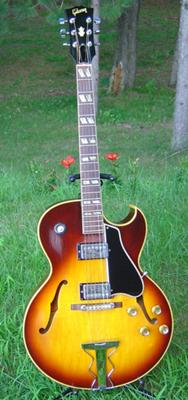Problem with bridge and new strings
by Jacob Sirof
(California)
I changed my guitar strings last night. But the bridge, where I put my tremolo bar keeps bending forward, and I cannot get it in tune, because it keeps going forward changing the tuning. Is there anything I can do to stop this from happening, so I can play without worrying?
ANSWER
Hi, Jacob--
I can't see the bridge, but if it is a Floyd Rose, this is a common occurrence.
"SETUP ADJUSTMENT PROCEDURE
The "Original" Floyd Rose is an amazingly stable vibrato bridge. However, proper setup is vital - one important requirement is that the faceplate must be parallel with the guitar's body when the strings are tuned to pitch. Below is a straight-forward procedure to get it there.
1. First unlock the nut and unscrew the fine tuners until they stop and then give them all about a half a turn in. We'll leave the locking nut and fine tuners alone until we get the springs adjusted and guitar in tune.
Examine your present setup. After the strings are tuned to pitch, the bridge's faceplate should be parallel with the guitar's body - not leaning more to the front or back. If it is tilted too far to the rear, go to step 5. If the unit is tilted too far forward (arm too low), start below on step 2.
2. Using the regular tuning keys, tune all strings flat. It's easier to set up a Floyd if the unit is already adjusted too far back, so remove the spring cavity cover on the rear of the guitar and tighten the spring adjustment screws in a few turns (see diagram below). The idea here is to get the face plate to tilt slightly back after the strings are in tune.
Go to step 3 to tune the strings and we'll see if we adjusted the unit back enough.
3. Tune the strings. This may take a bit of time so get out your digital tuner and sit somewhere comfortable. Using the tuners on the headstock, start with the low E and work your way across. Since the bridge gets pulled forward with string's tuning, you will have to go through several full passes. Notice that each pass requires you to have to tune up less. Never tune the string sharp over pitch. Keep making passes and eventually it will get to the point where no more tuning is required.
4. It's in tune now and if the spring adjustment we did in step 2 was enough, the faceplate should now be at an angle that's too far back and you can go to step 5. If you got extremely lucky, the faceplate will be parallel with the guitar body and you can go to step 6. If the bridge is not angled back enough, go back to repeat step 2.
5. If the faceplate is angled back, now you can begin adjusting the spring tension screws out a little at a time. Turn both screws counter-clockwise maybe 1/4 turn then tune the strings back up to pitch using the method in step 3.
Don't try to use the spring adjustment screws to get the unit all the way parallel because the counter-tension from the strings being raised into tune will pull it down even farther. Just use 1/4 turns at a time followed by getting the guitar completely in tune. Repeat this small incremental spring adjustment / tuning process until the plate is exactly parallel with the guitar body.
6. Once it's in tune and the faceplate is parallel, you can lock the nut and use the fine tuners to get the tuning zero'd. Start with the low E and work your way across making as many passes as it takes to get the strings in tune.
-------------------------------------------
Note: On these floating bridges during regular tuning, always tune UP from flat and if a major spring adjustment is necessary always start with high spring tension (excess backward tilt) and adjust from there."
**The above is courtesy of glowing tubes.com
Hope it helps!
Lynne






